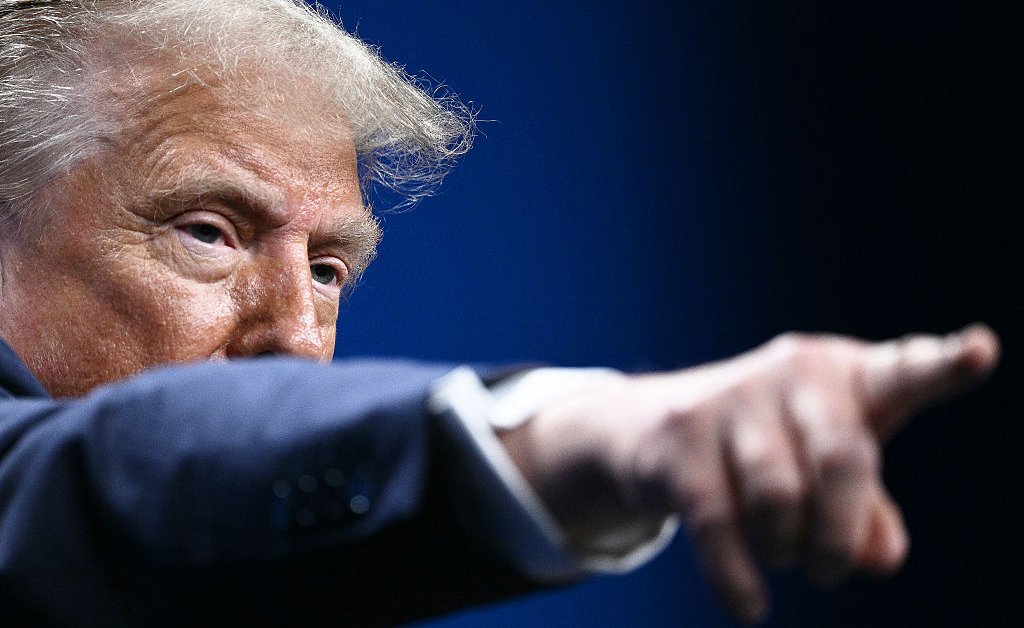This summer, millions of Americans will drink vodka in a stunning array of popular cocktails: from the well-known Moscow Mule and martini to the more obscure vesper or Great Gatsby. In 2024, vodka accounted for nearly a quarter of the spirits consumed in the U.S. The clear, neutral spirit has dominated American liquor sales for decades, far surpassing whiskey, which once enjoyed an unchallenged status as the nation’s preferred spirit. While whiskey remains a cultural touchstone for claims on American identity, the reality is that American consumers have consistently chosen vodka as their spirit of choice for decades.
The story of vodka’s rise in the U.S. was closely intertwined with Cold War-era cultural politics and shifting consumer tastes shaped by strategic marketing. While whiskey had long symbolized tradition, rural Americana, and old-world nostalgia, vodka emerged as a sleek, modern alternative. It became a beverage adaptable to changing American lifestyles marked by countercultural politics and globalized consumer culture. Even amid today’s craft cocktail renaissance and whiskey revivalism, vodka still stands as the most consumed spirit in bars and homes across the country—proof that Cold War cultural conflicts continue to shape our tastes.
Initially, Americans greeted vodka with limited enthusiasm. Late 19th century newspapers depicted the spirit as a foreign, exotic drink, associated primarily with Russian immigrants who brought their drinking traditions with them.
In the 1930s, vodka gained its first meaningful foothold in the U.S. when a Russian immigrant named Rudolph Kunett brought the Smirnoff brand to Bethel, Conn. Over the next decade, the spirit remained mostly a curiosity—far down the pecking order of Americans’ drink preferences.
Read More: The History Behind Why Canadians are Boycotting American Whiskey
Vodka made its real breakthrough during World War II. Businessman John G. Martin, president of the Connecticut based Heublein import company, acquired the struggling Smirnoff vodka brand from Kunett for $14,000 on a whim. In the following years, Martin realized that vodka had huge untapped potential. He emphasized the spirit’s flavorlessness as a selling point, rather than a liability. The businessman marketed vodka as “Smirnoff’s White Whiskey: No Smell, No Taste,” an odorless, flavorless mixer suitable for blending into a wide range of cocktails.
Seeing some initial success with this advertising strategy in the 1940s, Martin heavily promoted a wide range of vodka-based drinks to grow the brand’s appeal. He popularized not only the Moscow Mule, in its distinctive copper mug, but also the Bloody Mary and the Screwdriver, all of which became household names over the following decades. All of Martin’s concoctions emphasized ease of consumption—only requiring one or two ingredients—as well as distinctive presentation.
In the first half of the 1950s, vodka sales exploded, rising from 40,000 cases in 1950 to over 4 million by 1955. As a flavorless mixer, vodka filled a gap in the American spirits market, providing bartenders and home drinkers alike with an unchallenging tipple to mix with anything on hand.
Interestingly, vodka’s rise came against the complex backdrop of the Cold War. As major Cold War events like the Cuban Missile Crisis, the space race, and the Vietnam War fueled American anxieties and obsessions about Soviet power, the spirit found a way to slip past political divisions and into American homes—despite its connections with the Soviet enemy.
Companies were aware of the risks of vodka being swept up in Cold War politics. Their marketing campaigns took care to avoid anti-Soviet hostility by emphasizing aspects of Russian culture disconnected from contemporary geopolitics. Advertisers invoked images of Imperial Russia rather than Soviet communism, hyping vodka’s sophistication and European heritage. High gloss ads for Smirnoff showed celebrities drinking the spirit in locations ranging from the Russian imperial court to exoticized jungle backgrounds.
The vodka bottle became an emblem of elegance and international flair. Observing Smirnoff’s success, the company’s competitors—brands like Samovar and Wolfschmidt—quickly seized on the same marketing strategy.
The transformation of vodka from derided immigrant liquor to acclaimed opulent spirit operated in tandem with a broader cultural shift: as the Baby Boomers came of age in the 1960s and 1970s, they became major consumers and increasingly rejected the cultural norms of the previous generation. Baby Boomers’ parents drank whiskey, and they wanted to rebel.
To the Boomers, whiskey symbolized traditional masculinity and rural values, deeply rooted in American history and nostalgia for a simpler past. Vodka, conversely, signaled sophistication, fitting comfortably into this generation’s desire for newness. Despite the fact that almost all vodka consumed in the U.S. was made in America, the spirit’s global associations intertwined with baby boomers’ desire for cosmopolitan connection. The spirit’s association with Russia only emphasized its freshness—countercultural opposition to the Cold War led many a baby boomer to drink vodka as protest.
Heublein, the manufacturer of Smirnoff, attributed their success to a “youth-sparked movement” as the boomers embraced the company’s product.
Gender also played a key role. Vodka advertisers marketed the spirit as less challenging for women, even a diet option in some cases. As more women entered the workforce and companies targeted them as consumers, it changed the gender norms around alcohol. Recognizing this, Samovar upset the traditional rules of advertising in 1960 by hiring five women to help market their vodka.
Read More: Tequila is About to Become the U.S.’s Most Popular Spirit. That’s Bad for the Environment
Marion Johnson, the company’s brand manager and one of the first female liquor advertising directors in the U.S., commented on this new strategy: “Women generally do not like the taste of liquor. Vodka is said to have no taste. So they can be sociable and still enjoy themselves.” In contrast to this female focused pitch, many whiskey brands in the 1960s and 1970s continued to lean into names and imagery evoking age, tradition, and masculinity. Brands like Old Crow, Old Forester, and Old Grand-Dad sought to signal a deliberate link to a gendered past.
The entry of Stolichnaya into the U.S. market in 1972 further cemented vodka’s status. Paradoxically, the brand benefitted from its Soviet origins. While Smirnoff and other brands touted their cultural heritage in the pre-Soviet Russian Empire, Stolichnaya entered the U.S. as the first ever Soviet-produced spirit. Through a brand deal with PepsiCo that also saw Pepsi sold in the U.S.S.R, Stolichnaya represented a novel economic exchange between the two superpowers. At a time when Cold War tensions heightened curiosity and suspicion about all things Soviet, American consumers flocked to the new vodka as an edgy, exotic choice—drinking vodka became simultaneously an act of defiance and fascination.
A 1974 ad for Stolichnaya displayed four vodka bottles and noted where they were made—Samovar: Schenley, Pa.; Smirnoff: Hartford, Conn.; Wolfschmidt: Lawrenceburg, Ind., and Stolichnaya: Leningrad, U.S.S.R. The tagline proudly trumpeted, “Most American vodkas seem Russian. Stolichnaya is different. It is Russian.” These claims to authenticity exploded consumption of Stolichnaya, specifically, and vodka, more generally.
By 1976, vodka had unseated whiskey as the most consumed spirit in the U.S. Vodka’s dominance continued through the 1980s and 1990s with the meteoric rise of Swedish brand Absolut, whose artistic advertising campaigns captured the imagination of a new generation of young Americans. The brand’s minimalist bottle and bold, art-infused ads made it a cultural icon, feted in magazines and billboards across the country. During this period, flavored vodkas—from citrus to pepper to vanilla—also took off.
American tastes had also fully shifted toward light, easy-drinking spirits whose ad campaigns promised them versatility, fewer calories, and a sense of modern sophistication. Vodka’s newfound status as the country’s go-to liquor reflected how thoroughly it had reshaped the American drinking landscape.
The craft cocktail revolution of the 2000s—when high-end bars, aproned bartenders, and carefully curated liquor menus surged through the country—seemed to pose a threat to vodka’s dominance. Craft bartenders often turned their nose up at the flavorless spirit, and the Wall Street Journal in 2009 triumphantly declared, “vodka is passe.”
Yet, despite repeated claims of vodka’s demise, it remains America’s top-selling spirit. That’s a testament to its successful reinvention during a crucial period of American cultural change. Whiskey, which has experienced a resurgence over the past 15 years, has never regained its mass-market dominance. The Cold War era fundamentally reshaped American drinking culture, aligning vodka’s blank-slate versatility with new cultural identities less rooted in tradition and place, and more in global consumerism and modernist aesthetics. Reflecting on vodka’s ascendance helps illuminate how consumer choices are deeply connected to broader cultural and political trends.
The story of vodka is the story of modern America, encased in a clear, flavorless spirit that appears neutral but retains cultural power.
E. Kyle Romero is an assistant professor at the University of North Florida. He studies the history of American foreign policy, immigration politics, and global consumer economics.
Made by History takes readers beyond the headlines with articles written and edited by professional historians. Learn more about Made by History at TIME here. Opinions expressed do not necessarily reflect the views of TIME editors.








